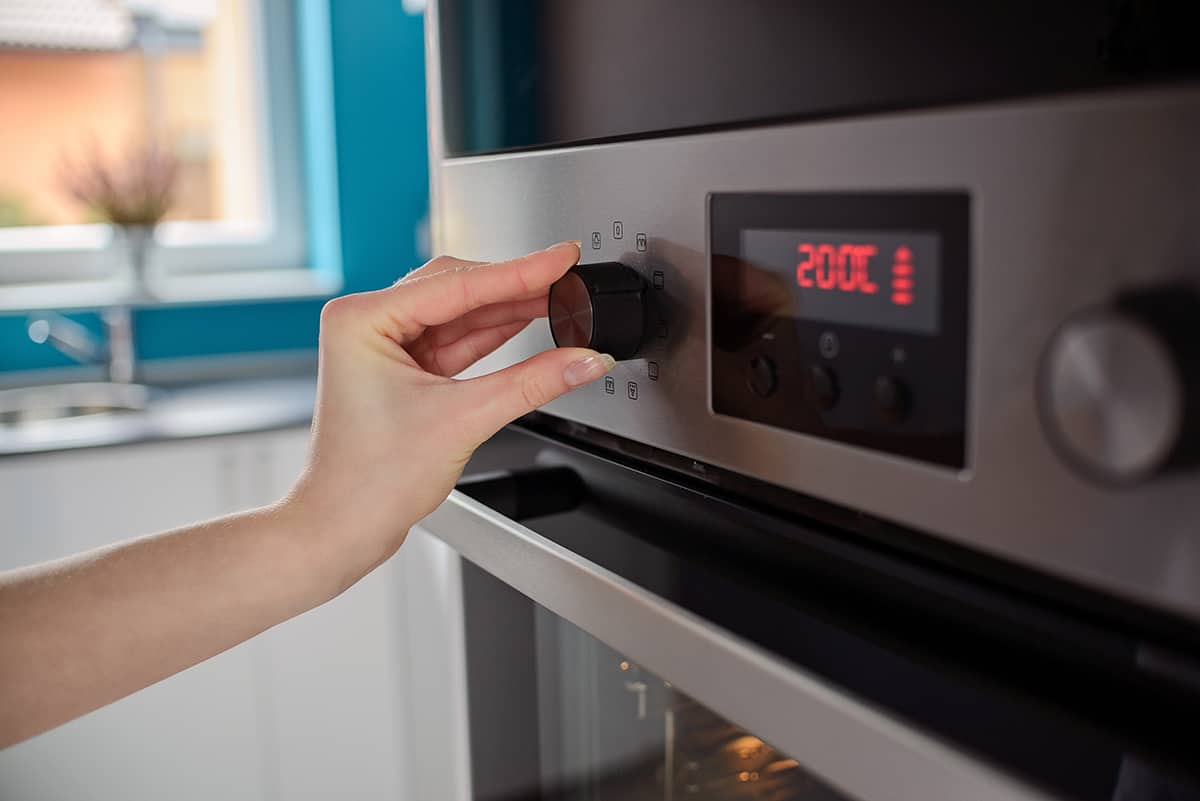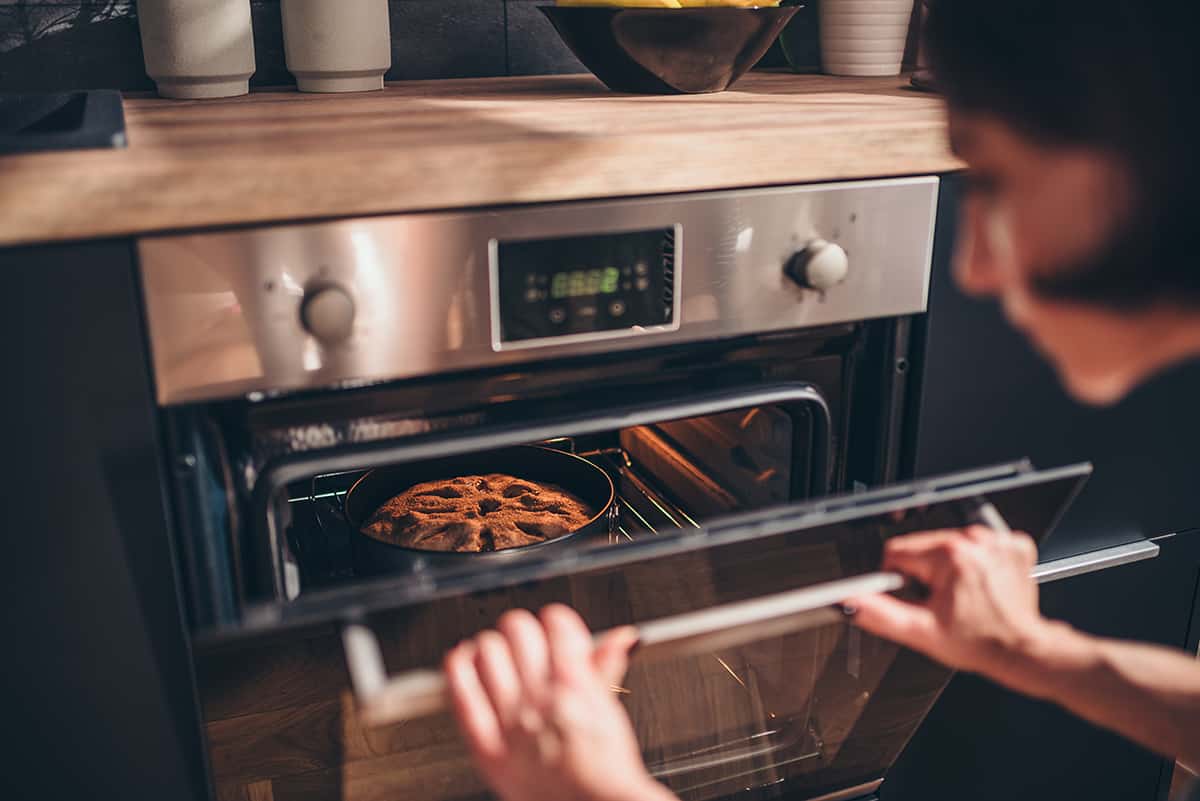If you’ve had your oven for a while and you’re accustomed to its temperature settings, then you likely don’t need to calibrate it. However, if you’ve just moved into a new home, or you’ve bought a new oven, then it’s a good idea to calibrate it so you can be sure it’s cooking at the right temperatures.
A properly calibrated oven will help you to achieve better baking results and mean fewer burnt pizzas or undercooked chicken. Here we look at signs that tell you it’s time to calibrate your oven, and how to go about calibrating ovens.
Should I Calibrate My Oven?
Most people will have gotten used to the way their ovens work over a period of time, and if you’re happy with how your oven works then it’s best to leave it alone. There’s some room for error when it comes to oven temperature, and although your temperature knob is set to 400°F, the actual temperature in your oven is likely to range anywhere from 380 to 420°F.
It may be that you know your oven runs a little hot, so when a recipe tells you to set your oven to 400°F, you know that you actually only need to set the oven to 390°F to achieve the best results. If this is the case, you can continue using your oven in this way, or you may prefer to calibrate it so that the temperature settings more accurately reflect the actual temperature in the oven.
If you have recently moved into a new property it can be quite a shock to find that the oven works differently to your previous oven.
This can lead to multiple incidents of burnt dishes if the oven gets hotter than you are used to, or you may be waiting a long time for a meal to be ready if it doesn’t get as hot as you were expecting. In this instance, you should calibrate your oven so that you can get better baking results, with more accurate temperatures.
Signs that your oven needs calibrating:
Overcooked food
If you set your oven to cook at the correct temperature for the correct length of time, yet your food is coming out overcooked, then this is a sure sign that your oven is running too hot. To resolve this issue, you will need to calibrate your oven.
Baked goods not browning
If you are following a recipe for cookies or cupcakes, and your baked goods are not achieving that delicious golden finish within the expected time frame, then your oven is probably not getting hot enough. For better baking results, calibrate your oven.
Unevenly cooked food
When an oven is running too hot, it will cause the outside of food to burn, while the inside may not be properly cooked. For fries, this can look like burnt skins when the inner fries are still hard or raw.
For chicken nuggets, the crispy breadcrumbs might look golden and ready to eat, but when you cut into the nugget the inner chicken is still partially frozen and unsuitable for eating. To avoid serving food that isn’t suitable for consumption, you should look at calibrating your oven so that it runs at the correct temperature settings.
How to Calibrate Oven

Before you get started on calibrating your oven, you need to first assess how inaccurate your temperature settings are. This will confirm whether you definitely need to calibrate your oven, and it will also give you an indication of how much your oven needs to be calibrated. If the temperature is way off, it may not be something you can fix yourself.
To do this you’ll need to check the temperature inside your oven.
Oven temperature test
- Get yourself a good quality oven thermometer and put this in the middle of an oven rack, on the middle shelf of the oven. Set the oven to 350°F, and wait for the oven to indicate that it has reached temperature. This is usually signaled by a beep or an indicator light. If your oven doesn’t alert you when it has gotten up to temperature, you should instead wait for 30 minutes to pass to give the oven the time to properly heat up.
- Once the oven has reached its temperature setting, take a reading from the thermometer. Ideally, you want to do this through the glass window in the oven door, because as soon as you open the door you’ll be letting hot air out which could affect the temperature reading. If your oven doesn’t have a glass door, open the door quickly and take the reading from the thermometer as soon as possible for the most accurate results.
- Now you need to compare your reading to your 350°F temperature setting. If the reading on our thermometer is within 5 degrees of 350°F, then it’s probably not worth calibrating your oven, as this is considered to be an accurate reading as far as ovens go. However, if your temperature reading is more than 5 to 10 degrees higher or lower than 350, you should calibrate your oven. If your temperature reading is between 320 to 345°F, or 355 to 380°F, you can calibrate the oven yourself. If the temperature reading is more than 30°F out in either direction, it’s best to call an engineer to take a look.
Calibrating the oven
Calibrating your oven is actually much easier than it sounds. It should only take a few minutes and requires very little in the way of skills, knowledge, or tools.
Analog oven calibration
If your oven is an analog oven, it will have knobs that you turn to set the temperature. To calibrate this type of oven you’ll need to remove the temperature knob by pulling it off. Once removed, you should see a screw underneath. This screw needs to be turned slightly to adjust the temperature settings. If your oven is cooking too hot, you can lower the temperature by turning the screw clockwise.
If your oven isn’t running hot enough, you can increase the temperature by turning the screw counterclockwise. This can usually be done with a Phillips head screwdriver, or by gripping onto the screw with some small pliers. You should only turn the screw very slightly because the most minor adjustment can result in a large temperature change.
An eighth of a turn at a time is recommended. After turning the screw an eighth of a turn, you should repeat the temperature test with a thermometer in the oven. If the temperature in the oven still doesn’t accurately reflect the temperature setting on the knob, you can turn the screw again to make the necessary adjustments.
Digital oven calibration
Digital ovens will have a digital display, and press buttons rather than dials or knobs. To enter calibration mode you will probably need to take a look at the oven’s instruction manual.
This will usually involve holding down one or two buttons in a specific sequence. Once you have reached calibration mode, you can alter the temperature settings by using the arrow buttons. After you have calibrated the oven, run another temperature test with a thermometer inside the oven to check if the temperature is reading more accurately.






